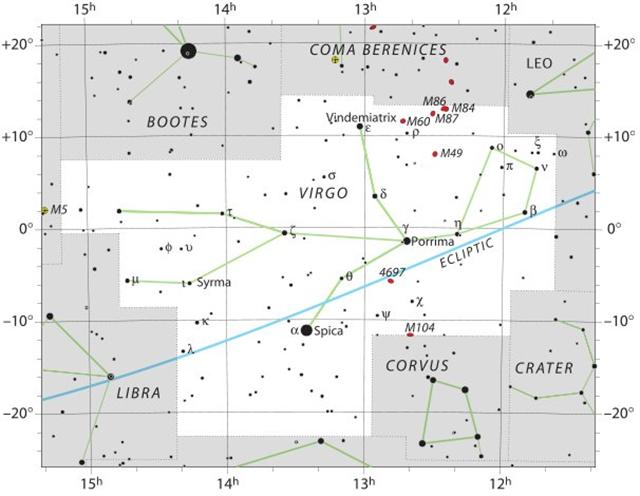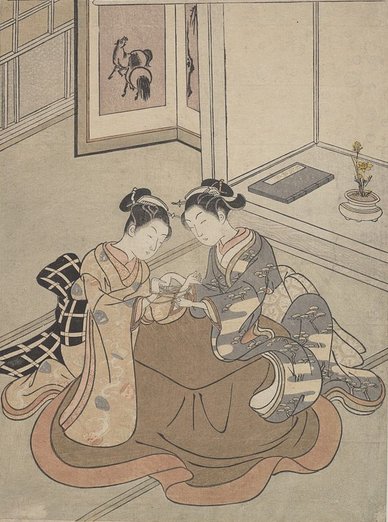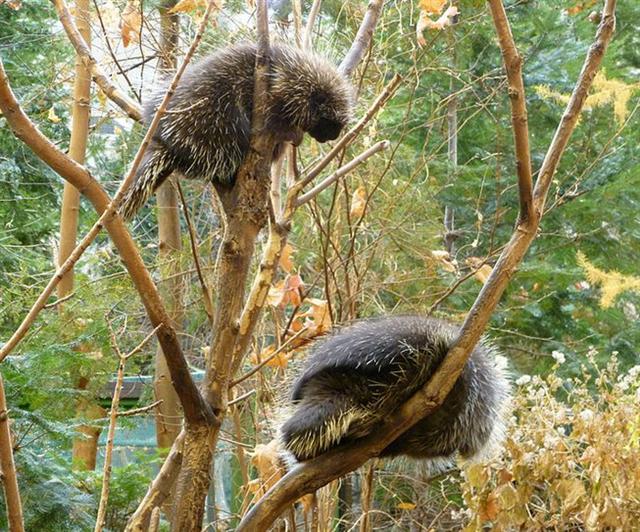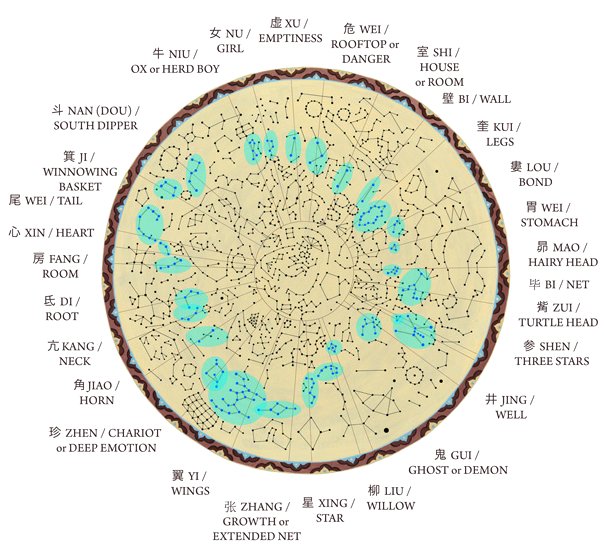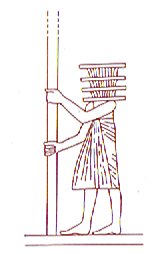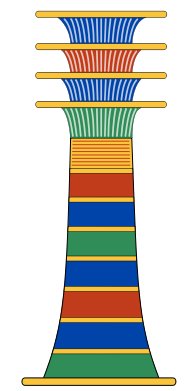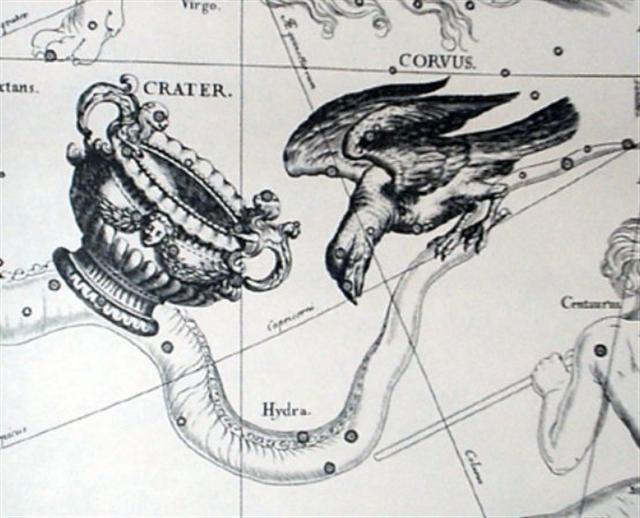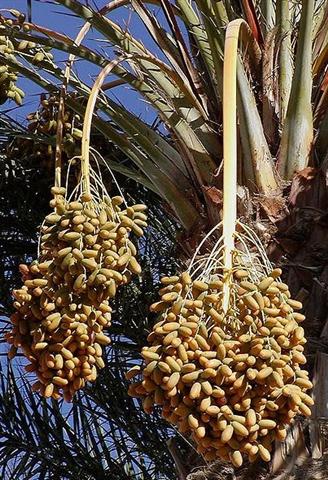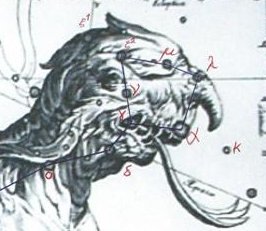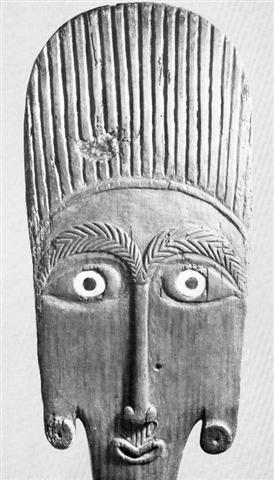|
TAHUA II
50 Once again. It should be noted that the Easter Island word tara was used not only for 'point' but also for 'corner' (→ Zaniah, η Virginis, at her Neck). Tara. 1. Thorn: tara miro. 2. Spur: tara moa. 3. Corner; te tara o te hare, corner of house; tara o te ahu, corner of ahu. Vanaga. (1. Dollar; moni tara, id.) 2. Thorn, spike, horn; taratara, prickly, rough, full of rocks. P Pau.: taratara, a ray, a beam; tare, a spine, a thorn. Mgv.: tara, spine, thorn, horn, crest, fishbone. Mq.: taá, spine, needle, thorn, sharp point, dart, harpoon; taa, the corner of a house, angle. Ta.: tara, spine, horn, spur, the corner of a house, angle. Sa.: tala, the round end of a house. Ma.: tara, the side wall of a house. 3. To announce, to proclaim, to promulgate, to call, to slander; tatara, to make a genealogy. P Pau.: fakatara, to enjoin. Mq.: taá, to cry, to call. 4. Mgv.: tara, a species of banana. Mq.: taa, a plant, a bird. Ma.: tara, a bird. 5. Ta.: tara, enchantment. Ma.: tara, an incantation. 6. Ta.: tara, to untie. Sa.: tala, id. Ha.: kala, id. Churchill
The Mother of Maui was Taranga. And porcupines climbed trees:
... One of the main rites of the dance consists in the offering of a human wife to the moon. The central pole in the ceremonial bower represents the tree climbed by the heroine in the myth - about a 'porcupine' lodged in the Tree - and belongs to the same species (Populus sp.) ... And the 14th (↔ 28 / 2) Chinese station (Wall) at Algenib Pegasi was associated with (↔) the Porcupine.
A porcupine is a kind of pig with spines (tara):
The Pig grew spines in order to raise the sky, we could imagine. ... The conclusion seems to be that the myths conceive of the relationship between sky and the earth in two ways: either in the form of a vertical and spatial conjunction, terminated by the discovery of cooking, which interposes domestic fire between sky and earth; or in the form of a horizontal and temporal conjunction, which is brought to an end by the introduction of the regular alternation between life and death, and between day and night .. ... In China, every year about the beginning of April, certain officials called Sz'hüen used of old to go about the country armed with wooden clappers. Their business was to summon the people and command them to put out every fire. This was the beginning of the season called Han-shih-tsieh, or 'eating of cold food' ... . ... It must be admitted, however, that the task of raising the sky was not always a long and arduous one. In the New Hebrides of Melanesia the sky was formerly so low overhead that a woman who was pounding roots in a mortar happened to strike the sky with her pestle. Greatly annoyed at the interruption she looked up and cried angrily, 'Go on up higher!' Whereat the sky meekly obeyed her ...
And a house is a home: ... In the morning of the world, there was nothing but water. The Loon was calling, and the old man who at that time bore the Raven's name, Nangkilstlas, asked her why. 'The gods are homeless', the Loon replied. 'I'll see to it', said the old man, without moving from the fire in his house on the floor of the sea. Then as the old man continued to lie by his fire, the Raven flew over the sea. The clouds broke. He flew upward, drove his beak into the sky and scrambled over the rim to the upper world. There he discovered a town, and in one of the houses a woman had just given birth . The Raven stole the skin and form of the newborn child. Then he began to cry for solid food, but he was offered only mother's milk. That night, he passed through the town stealing an eye from each inhabitant. Back in his foster parents' house, he roasted the eyes in the coals and ate them, laughing. Then he returned to his cradle, full and warm. He had not seen the old woman watching him from the corner - the one who never slept and who never moved because she was stone from the waist down ...Half a year later was another corner, viz. that at the September equinox - at the thirsty Raven. In the morning of the world there was nothing but water but half a year later there was no 'water snakes' at all remaining - they had all gone down into to bowels of the earth:
. .. the bird, being sent with a cup for water, loitered at a fig-tree till the fruit became ripe, and then returned to the god with a water-snake in his claws and a lie in his mouth, alleging the snake to have been the cause of the delay. In punishment he was forever fixed in the sky with the Cup and the Snake; and, we may infer, doomed to everlasting thirst by the guardianship of the Hydra over the Cup and its contents. From all this came other poetical names for our Corvus - Avis Ficarius, the Fig Bird; and Emansor, one who stays beyond his time; and a belief, in early folk-lore, that this alone among birds did not carry water to its young ...
The 13th Hindu station (Hand or Fist) might have motivated the creator of the C text to place an open (empty) hand as the last glyph on side a of his tablet. And Metoro might have understood the image in Ca1-4 as incorporating a fist (nothing as yet counted) up in front - and this fist had been switched from the back side to the front side (he might have implied with the order of his words):
... The practice of turning down the fingers, contrary to our practice, deserves notice, as perhaps explaining why sometimes savages are reported to be unable to count above four. The European holds up one finger, which he counts, the native counts those that are down and says 'four'. Two fingers held up, the native counting those that are down, calls 'three'; and so on until the white man, holding up five fingers, gives the native none turned down to count. The native is nunplussed, and the enquirer reports that savages can not count above four ...
Here the line between Polaris and Baten Kaitos seems to have defined a place where there was a week remaining to the wonderful star Mira. April 16 + 7 = April 23:
|
||||||||||||||||||||||||||||||||||||||||||||||||||||||||||||||||||||||||||||||||||||||||||||||||||||||||||||||||||||||||||||||||||||||||||||||||||||||||||||||||||||||||||||||||||||||||||||||||||||||||||||||||||||||||||||||||||||||||||||||||||||||||||||||||||||||||||||||||||||
